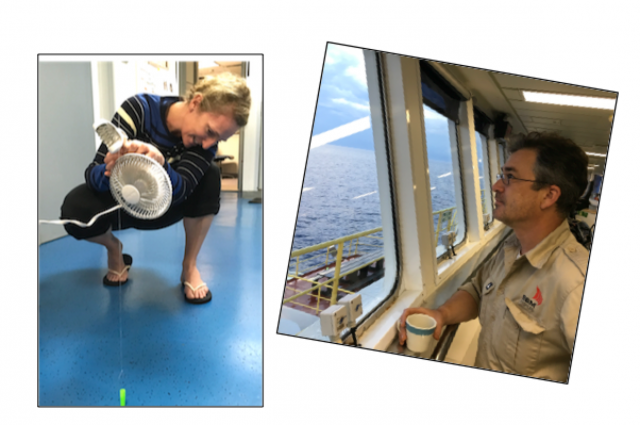
No anchors, a needle on a string, we need thrusters!
If you want to approximate the difficulty of drill hole re-entry with the drill string you could try the following set up. Warning: You may have fun doing this and understand that this is only a model – A simplified version of the real challenge out at sea.

— Get a long length of string, lets say about 20 feet or 6 meters attach a needle or paper clip to one end. You need to find a balcony and dangle this needle just above the ground. If you do not have a balcony a sturdy step stool or ladder with a spotter. Perhaps you could find a couple of shop fans and set them up at different points that will intercept the pathway of the string that you dangle. The fans blowing on the string of course represent the ocean currents. Some times a current will be going one direction at the surface of the water while another current is going in the opposite direction at a lower depth. you can not find fans try this on a mildly windy day. Place a pen cap on the ground below. Your job is to insert the needle into a pen cap on the ground below. Ready set go!
This begins to come near the challenges and complexities of what it is like to re-enter a drill hole (pen cap) with the drill string (needle and thread) on the JOIDES Resolution. The drill string in reality is a line of steel tubes one fitting inside the other. A seemingly rigid structure while on the boat but under the water is drifts and sways with the currents of the water.
I asked Jake Robinson the Chief Mate what he thought about the accuracy of this model and he said that to be more realistic you might blind fold the person handling the string and have another person give directions. Or increase the height and add a small go pro camera to the needle and only watch the video camera to make adjustments. Also to represent the movement of the boat on the surface of the water have the person handling the string swinging in a hammock or have someone gently shake them from side to side.
Once the drill string is back in the hole the ship must stay in that approximate position. How does it do that in up to 3,000+ meters of water? You can not set an anchor!
The key to staying in this dynamic stationary position above the drill hole is the thrusters on the ship. The JR has 12 of them and a finely tuned Dynamic Positioning System that acts much like your brain and hands feedback system to stay at an approximate fixed position above the sea floor. To learn a little more about this Dynamic Positioning System that keeps us stationary despite the movement of currents read this previous expedition’s blog post.
